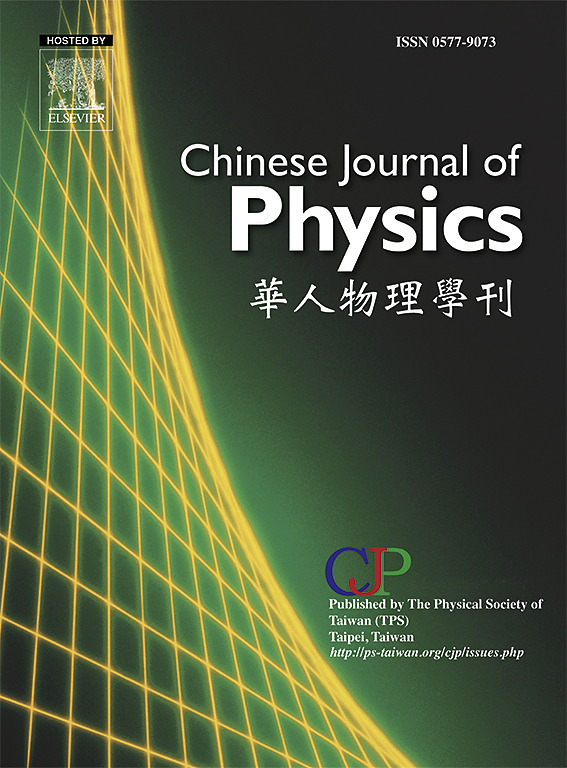自旋极化氚、氢和4He气体的玻色-爱因斯坦凝聚转变温度,使用第二维里系数
IF 4.6
2区 物理与天体物理
Q1 PHYSICS, MULTIDISCIPLINARY
引用次数: 0
摘要
在本研究中,根据第二维里系数得到了自旋极化氚(T↓)、氢(H↓)和4He气体的玻色-爱因斯坦凝聚转变温度。利用自旋极化原子氢同位素和4He气体的Silvera三态势和HFDHE2势分别进行了计算。计算了这些玻色系统的热物理性质,包括亥姆霍兹自由能、熵、声维里系数和二次维里系数。第二维里系数和声学维里系数的负值较大,反映了玻色子间势的强整体吸引力,这表明在极低温度下冷凝开始。在转变温度下,亥姆霍兹自由能的稳定最小值是一种玻色-爱因斯坦凝聚(BEC)的指标。结果,系统过渡到一个高阶态,用BEC识别并探索。转变温度向着比理想玻色气体更低的值移动。本文章由计算机程序翻译,如有差异,请以英文原文为准。

Transition temperature to the Bose-Einstein condensation of spin polarized tritium, hydrogen, and 4He gases using the second virial coefficient
In this study, the transition temperature to the Bose-Einstein condensation of spin-polarized tritium (T↓), hydrogen (H↓), and 4He gases is obtained based on the second virial coefficient. The computations are performed using the Silvera triplet-state potential and HFDHE2 potential for spin-polarized atomic hydrogen isotopes and 4He gas, respectively. The thermophysical properties of these Bose systems are computed, including the Helmholtz free energy, entropy, the acoustic virial coefficient, and the second virial coefficient. Large negative values of the second virial coefficient and the acoustic virial coefficient are obtained, reflecting the strong overall attraction of inter-bosonic potential, which gives an indication of the onset of condensation at very low temperatures. At the transition temperature, the stable minimum of the Helmholtz free energy is an indicator of the sort of Bose-Einstein condensation (BEC). As a consequence, the system made a transition to a higher-order state, which is recognized with BEC and explored. The transition temperature is shifted towards a lower value than for the ideal Bose gas.
求助全文
通过发布文献求助,成功后即可免费获取论文全文。
去求助
来源期刊

Chinese Journal of Physics
物理-物理:综合
CiteScore
8.50
自引率
10.00%
发文量
361
审稿时长
44 days
期刊介绍:
The Chinese Journal of Physics publishes important advances in various branches in physics, including statistical and biophysical physics, condensed matter physics, atomic/molecular physics, optics, particle physics and nuclear physics.
The editors welcome manuscripts on:
-General Physics: Statistical and Quantum Mechanics, etc.-
Gravitation and Astrophysics-
Elementary Particles and Fields-
Nuclear Physics-
Atomic, Molecular, and Optical Physics-
Quantum Information and Quantum Computation-
Fluid Dynamics, Nonlinear Dynamics, Chaos, and Complex Networks-
Plasma and Beam Physics-
Condensed Matter: Structure, etc.-
Condensed Matter: Electronic Properties, etc.-
Polymer, Soft Matter, Biological, and Interdisciplinary Physics.
CJP publishes regular research papers, feature articles and review papers.
 求助内容:
求助内容: 应助结果提醒方式:
应助结果提醒方式:


